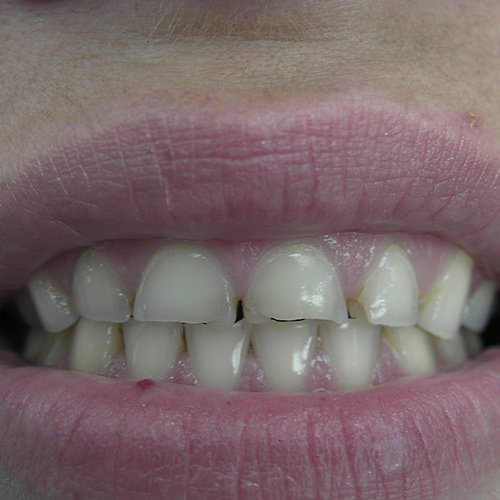Dental Bridge Services

Restoring a beautiful, functional smile is a top priority for individuals who have lost one or more teeth due to injury, decay, or other oral health issues. Among the various restorative dentistry options, dental bridges have emerged as a popular and effective solution. A dental bridge is a prosthetic device that “bridges” the gap between teeth, providing a natural-looking and feeling replacement for missing teeth. This comprehensive overview will delve into the world of dental bridge services, exploring the types, benefits, and what to expect during the procedure.
Understanding Dental Bridges
Dental bridges are custom-made to match the natural color and shape of the surrounding teeth, ensuring a seamless integration into the dental arch. They are typically composed of two crowns that anchor the bridge in place, with one or more artificial teeth (pontics) suspended between them. The primary function of a dental bridge is to restore chewing function, prevent shifting of adjacent teeth, and enhance the overall aesthetic appearance of the smile.
Types of Dental Bridges
- Traditional Dental Bridges: This is the most common type of dental bridge. It involves creating a crown for the teeth on either side of the gap, with the pontic suspended between them. Traditional bridges are made from ceramic or porcelain fused to metal.
- Cantilever Dental Bridges: Used when there are adjacent teeth on only one side of the gap, cantilever bridges are ideal for areas where the bridge will not be subjected to heavy chewing forces.
- Maryland Bonded Bridges: Also known as resin-bonded bridges, these are made of plastic teeth and gums supported by a metal framework. They are more conservative and are often used for front teeth.
- Implant-Supported Bridges: This type of bridge uses dental implants instead of crowns or frameworks. Implants are surgically placed into the jawbone, providing a strong foundation for the bridge.
Benefits of Dental Bridges
- Improved Oral Function: Dental bridges restore the ability to chew, speak, and bite properly, enhancing overall quality of life.
- Enhanced Aesthetics: By filling the gap between teeth, bridges can dramatically improve the appearance of the smile, boosting confidence and self-esteem.
- Distribution of Forces: They help distribute the forces of chewing evenly, preventing excessive stress on individual teeth.
- Prevention of Tooth Shifting: By occupying the space of the missing tooth, bridges prevent adjacent teeth from shifting out of place, which could lead to more complex dental problems.
The Dental Bridge Procedure
The process of getting a dental bridge typically involves several steps and visits to the dentist:
- Initial Consultation: The dentist will assess the condition of the teeth and overall oral health to determine if a dental bridge is the best option.
- Preparation: The teeth on either side of the gap are prepared to support the crowns by removing some of the enamel. Impressions are taken to create a model of the teeth.
- Temporary Bridge: A temporary bridge is placed to protect the teeth and gums while the permanent bridge is being made.
- Bridge Creation: The dental technician creates the bridge according to the specifications provided by the dentist.
- Fitting and Adjustment: The temporary bridge is removed, and the permanent one is fitted. The dentist will check the fit, bite, and appearance, making any necessary adjustments.
- Follow-Up: After the procedure, follow-up visits are scheduled to check on the bridge’s adjustment and the health of the surrounding teeth and gums.
Maintenance and Care
To ensure the longevity of the dental bridge, it is crucial to practice good oral hygiene, including regular brushing and flossing. Regular dental check-ups are also essential for monitoring the condition of the bridge and the overall health of the mouth.
Conclusion
Dental bridges offer a viable and effective solution for individuals seeking to restore their smile and oral function. With advancements in dental technology and materials, today’s bridges are more durable, natural-looking, and comfortable than ever. By understanding the types, benefits, and process involved in dental bridge services, individuals can make informed decisions about their oral health and take the first step towards a more confident, healthier smile.
How long does a dental bridge last?
+The lifespan of a dental bridge can vary depending on several factors, including the type of bridge, the material used, and individual oral hygiene practices. On average, a well-maintained bridge can last for 10 to 15 years or more.
Are dental bridges painful to get?
+While the process of getting a dental bridge may involve some discomfort, particularly during the tooth preparation phase, modern dental practices often use local anesthesia to minimize pain. Additionally, any temporary discomfort can be managed with over-the-counter pain relievers.
How much do dental bridges cost?
+The cost of a dental bridge can vary significantly based on the type of bridge, the location, and the dentist's fees. Generally, prices can range from a few hundred dollars for a simple bridge to several thousand dollars for more complex or implant-supported bridges.
In conclusion, dental bridges are a versatile and effective restorative dentistry solution, offering both functional and aesthetic benefits. By choosing the right type of bridge and maintaining good oral hygiene, individuals can enjoy a restored smile and improved oral health for years to come.
